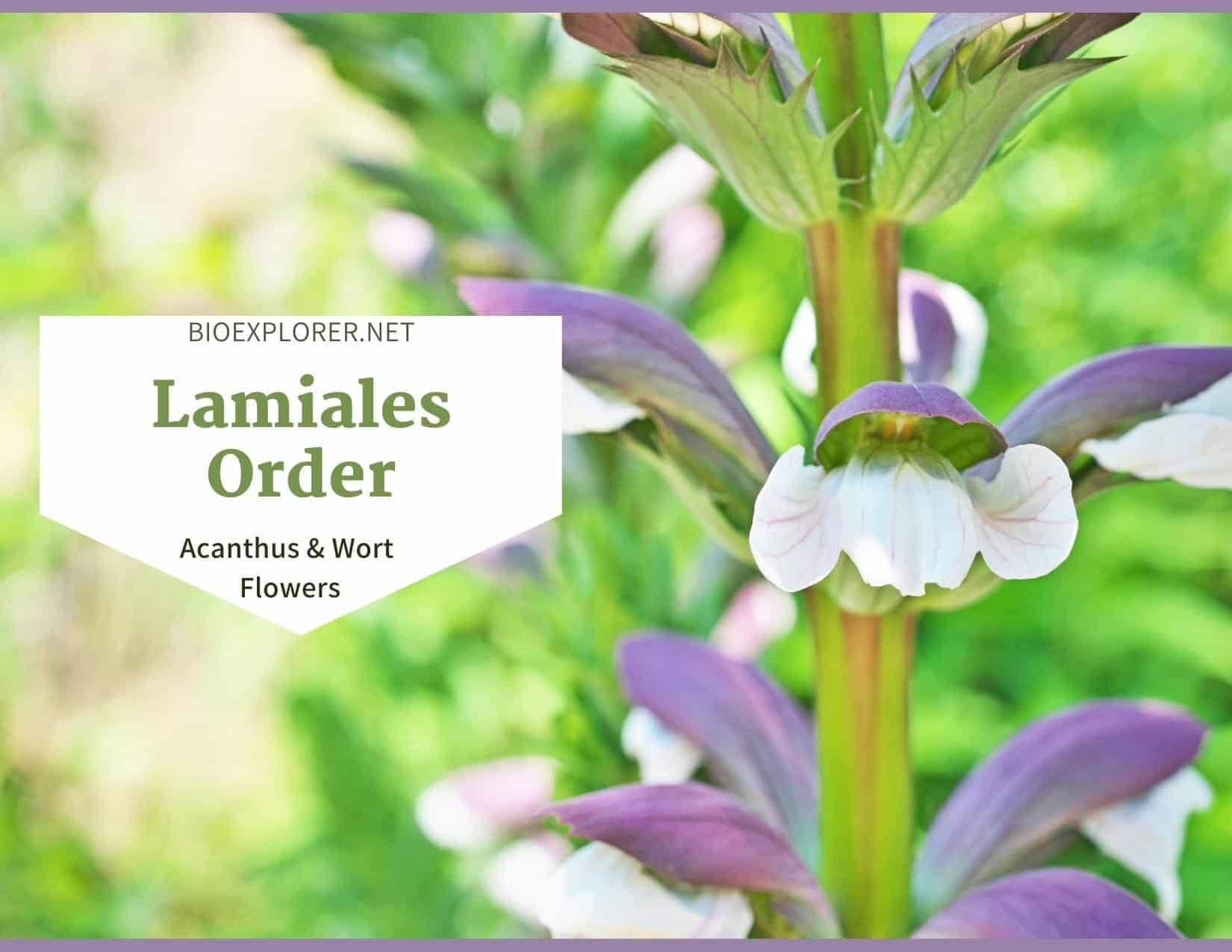
Lamiales is an ordering of flowering plants with most members found worldwide. The species of the Lamiales usually have opposite leaves, bilaterally symmetrical and often bilabiate corolla, five petals fused into a tube, four or fewer fertile stamens, and a superior ovary with fused carpels. The mints, olive, bladderworts, and plantain are plants under the Lamiales order.
Table of Contents
Lamiales Families
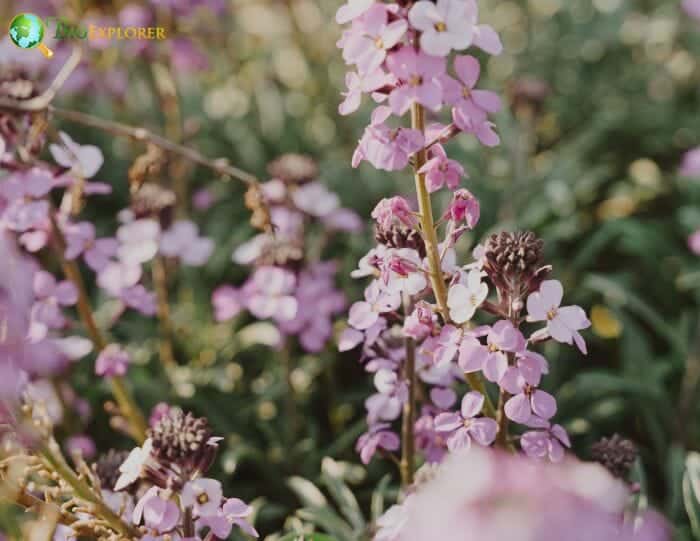
The APG IV botanical classification system places Lamiales under the asterids. The Lamiales order comprises 24 families, 1059 genera, and 23, 755 species.
- Acanthaceae (Acanthus family)
- Bignoniaceae (Bignonia plants family).
- Byblidaceae (Rainbow plant family).
- Calceolariaceae (Slipperworts family)
- Carlemanniaceae (Carlemannia family)
- Gesneriaceae (Gesneriad family)
- Lamiaceae (Mint family)
- Lentibulariaceae (Bladderworts family)
- Linderniaceae (False pimpernel family).
- Martyniaceae (Tiger’s Claw family).
- Mazaceae (Mazus plant family).
- Oleaceae (Olive family)
- Orobanchaceae (Broomrapes family)
- Paulowniaceae (Dragon tree family).
- Pedaliaceae (Sesame family)
- Phrymaceae (Lopseed family)
- Plantaginaceae (Plantain family)
- Plocospermataceae (Plocosperma family)
- Schlegeliaceae (Schlegelia family)
- Scrophulariaceae (Figwort family)
- Stilbaceae (Stilbe family)
- Tetrachondraceae (Rustweed family)
- Thomandersiaceae (Thomandersia family)
- Verbenaceae (Vervain family)
![]()
Lamiales Distribution
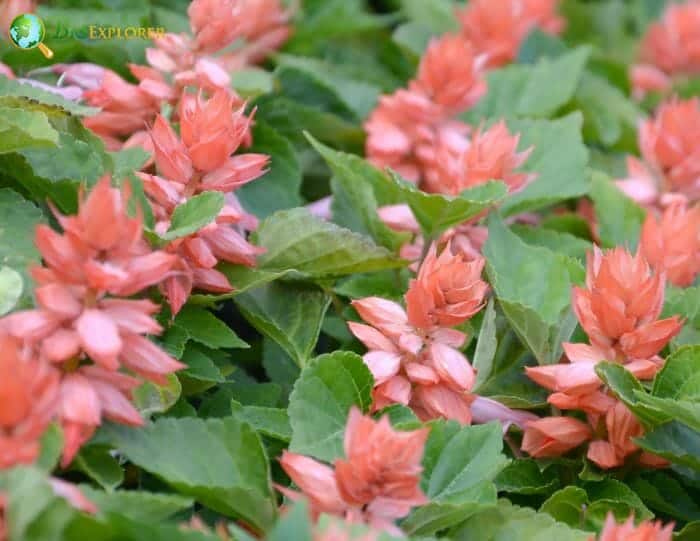
The Lamiales members are distributed worldwide. The Lamiaceae (236 genera and over 7000 species) is well represented in the temperate and tropical regions. The Oleaceae (29 genera and 600 species)[1] are also cosmopolitan in distribution. The great diversity of the Oleaceae plants is found in temperate and tropical Asia.
Some families of Order Lamiales are primarily tropical in distribution:
- Acanthaceae (220 genera and 4000 species).
- Bignoniaceae (110 genera and 800 species).
- Gesneriaceae (147 genera and 3200 species).
- Verbenaceae (30 genera and 1100 species).
The families with members that are chiefly distributed in the temperate regions are the following:
- Orobanchaceae (99 genera and 2025 species).
- Plantaginaceae (104 genera and 1800 species)[2].
- Scrophulariaceae (65 genera and 1700 species).
![]()
Lamiales Flowers By Family
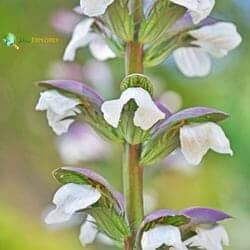 Acanthus flower (Acanthaceae)
Acanthus flower (Acanthaceae)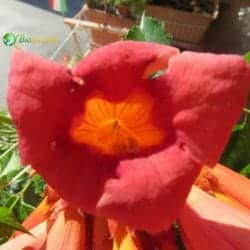 Bignonia flower (Bignoniaceae)
Bignonia flower (Bignoniaceae)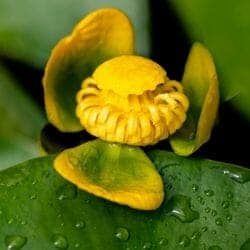 Bladderworts flower (Lentibulariaceae)
Bladderworts flower (Lentibulariaceae)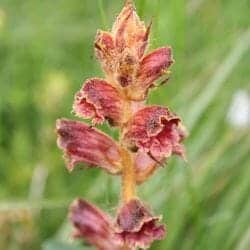 Broomrapes flower (Orobanchaceae)
Broomrapes flower (Orobanchaceae)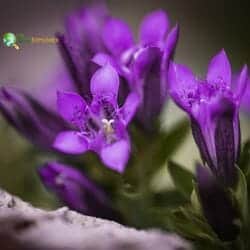 Byblis flower (Byblidaceae)
Byblis flower (Byblidaceae)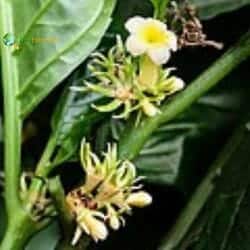 Carlemannia flower (Carlemanniaceae)
Carlemannia flower (Carlemanniaceae)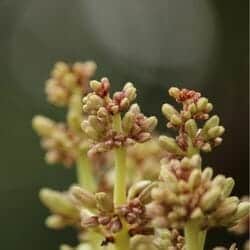 Dragon tree flower (Paulowniaceae)
Dragon tree flower (Paulowniaceae)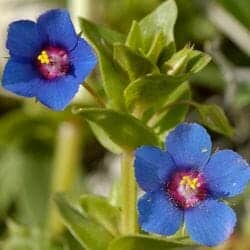 False Pimpernel flower (Linderniaceae)
False Pimpernel flower (Linderniaceae)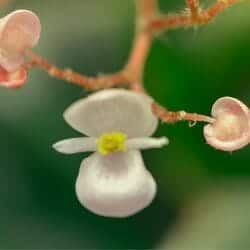 Figworts flower (Scrophulariaceae)
Figworts flower (Scrophulariaceae)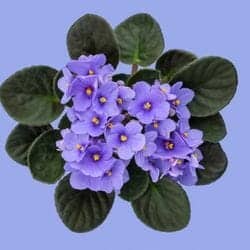 Gesneriad flower (Gesneriaceae)
Gesneriad flower (Gesneriaceae)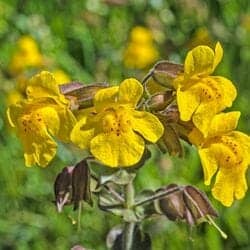 Lopseed flower (Phrymaceae)
Lopseed flower (Phrymaceae)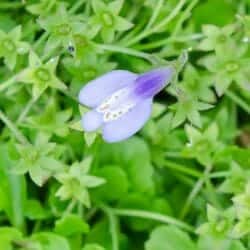 Mazus flower (Mazaceae)
Mazus flower (Mazaceae)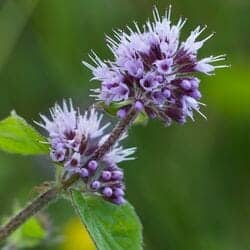 Mint flower (Lamiaceae)
Mint flower (Lamiaceae)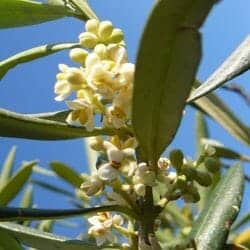 Olive flower (Oleaceae)
Olive flower (Oleaceae)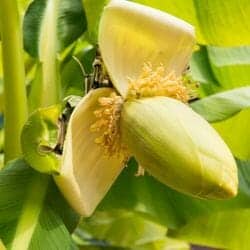 Plantain flower (Plantaginaceae)
Plantain flower (Plantaginaceae)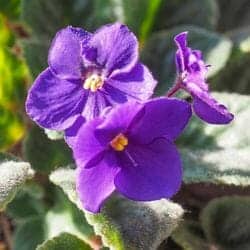 Plocosperma flower (Plocospermataceae)
Plocosperma flower (Plocospermataceae)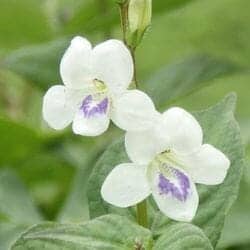 Rustweed flower (Tetrachondraceae)
Rustweed flower (Tetrachondraceae)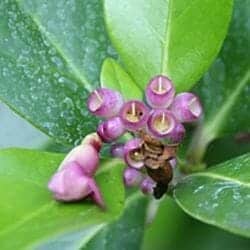 Schlegelia flower (Schlegeliaceae)
Schlegelia flower (Schlegeliaceae)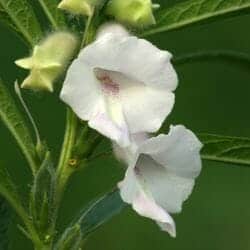 Sesame flower (Pedaliaceae)
Sesame flower (Pedaliaceae)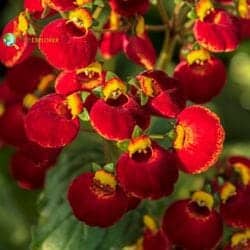 Slipperworts flower (Calceolariaceae)
Slipperworts flower (Calceolariaceae)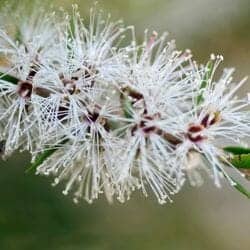 Stilbe flower (Stilbaceae)
Stilbe flower (Stilbaceae)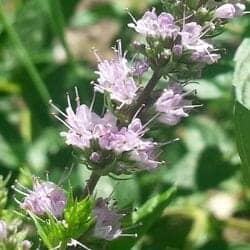 Thomandersia flower (Thomandersiaceae)
Thomandersia flower (Thomandersiaceae)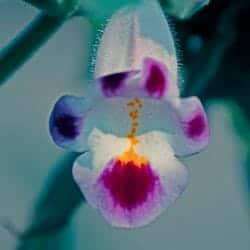 Tiger’s claw flower (Martyniaceae)
Tiger’s claw flower (Martyniaceae)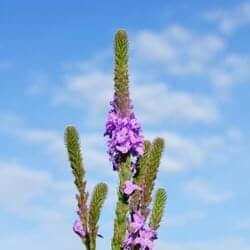 Vervain flower (Verbenaceae)
Vervain flower (Verbenaceae)![]()
Lamiales Characteristics
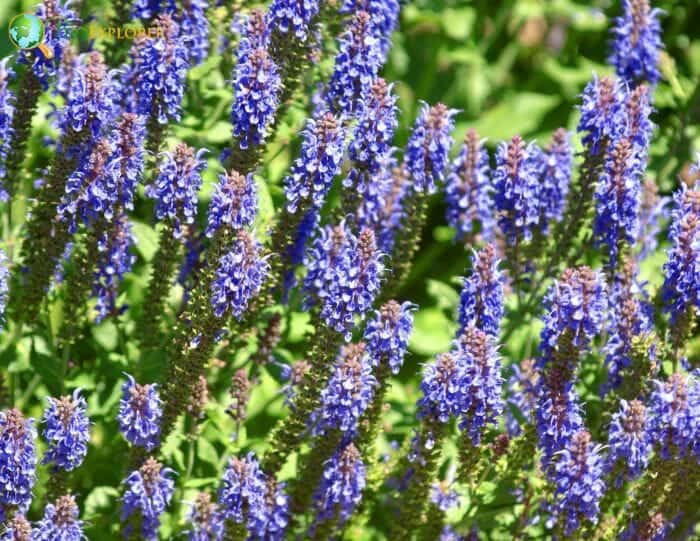
- Plant type: Members of the Order Lamiales are herbs, shrubs, trees, or lianas.
- Stems: The young stems of the plants are often tetragonal in section. The stems of many species have a strong scent when crushed. The achlorophyllous parasites (from Orobanchaceae) are often fleshy. Some plants have the main photosynthesizing function transferred to the stem.
- Leaves: The leaves of the plants are usually simple and opposite. Most are exstipulateWhat is exstipulate?Without stipules; Stipule is a small structure of appendage found at the base of some leaf petioles..
- Flowers and inflorescences: The flowers are often bisexual. They are solitary or in verticils, heads, spikes, raceme, cyme, or panicles.
- Sepals and petals: Flowers often have 5 sepals and 5 petals. Usually, the corolla is bilabiate. The petals are typically fused into a tube.
- Stamens and carpels: There are usually four or fewer fertile stamens. The carpels are often fused.
- Ovary and fruit: Most have superior ovary. The fruit is a schizocarp, capsule, berry, or achene.
- Seeds: The seeds are endospermic to non-endospermic. The endospermWhat is endosperm?An embryonic nutritive tissue formed during double fertilization by the fusion of a sperm with the polar nuclei., when present, is oily.
![]()
Lamiales Flowers and Reproduction

The flowers of the Lamiaceae are zygomorphicWhat is zygomorphic?A characteristic of the flower having only one plane of symmetry, as in a pea or snapdragon; bilaterally symmetrical; especially in reference to a flower or corolla; Opposite is Actinomorphic; irregular flower;, minute to medium-sized, and bisexual. These flowers are solitary or usually in verticils. Other flowers are in heads, spikes, cymes, or panicles.
- The calyxWhat is calyx?A collective term for all the sepals of a flower; the lowermost whorl of floral orgrans (Plural form is calyces). and the corolla are distinct in the perianth with basically 5 sepals in 1 whorl and also 5 corolla lobes in 1 whorl. Both the sepals and the petals are fused together at the base.
- The sepals are entire, blunt-lobed, or toothed. The calyx of the flowers is campanulate, funnel-shaped, or tubular. The corolla is plain or with contrasting colors. Typically, the 2 of 5 lobes form the upper lip of the flower while the remaining 3 lobes form the lower lip.
- The flowers of the Lamiaceae undergo entomophilousWhat is entomophilous?Pollination by insects. Contrast anemophilous (wind-pollination). or ornithophilousWhat is ornithophilous?Pollination by birds; other types are anemophily (wind-pollinated) and entomophily (insect-pollinated). pollination. The typical pollinators are the Hymenoptera, Lepidoptera, or Diptera.
- The Acanthaceae flowers[3] are bisexual, zygomorphic, tetracyclic, and hypogynous. The bracts of the flowers are commonly colored. The perianth is biseriate and dichlamydeousWhat is dichlamydeous?Having a perianth composed of a distinct calyx and corolla., and the calyx and the corolla are distinct.
- Usually, there are 5 imbricateWhat is imbricate?Tooltip Content and valvateWhat is valvate?Sepals having adjacent edges abutting rather than overlapping; opening by valves; edges of structures coming together so that the margins touch but won't overlap. sepals in the synsepalous calyx. The petals of the flowers are 4-5 (imbricate or convolute) in the sympetalous and usually bilabiate corolla. Flowers often have nectaries at the disk of the ovary base. The pollination of the Acanthaceae flowers is via insects.
- The flowers of Gesneriaceae are medium-sized to large, tetracyclic, and don’t have free hypanthiumWhat is hypanthium?It is a floral tube created by the fusion of the basal parts of the sepals, petals and stamens; the rest of the flower parts emanate from this.. The flowers are commonly bisexual, and the pollination is entomophilous, ornithophilous, or chiropterophilous (bat-pollinated).
- Gesneriaceae flowers are solitary or aggregated in the inflorescence (terminal, axillary, epiphyllous) of usually cymose. Others are in racemose. The calyx and the corolla are distinct. Typically, the sepals and petals are both in 5 lobes. The sepals are valvate, and the petals are imbricate and usually bilabiate. The petals are rotate or campanulate.
![]()
Lamiales Family Differences
Order Lamiales consists of 24 families. Only 7 families (more than 1, 000 species)[4] will be compared in this section.
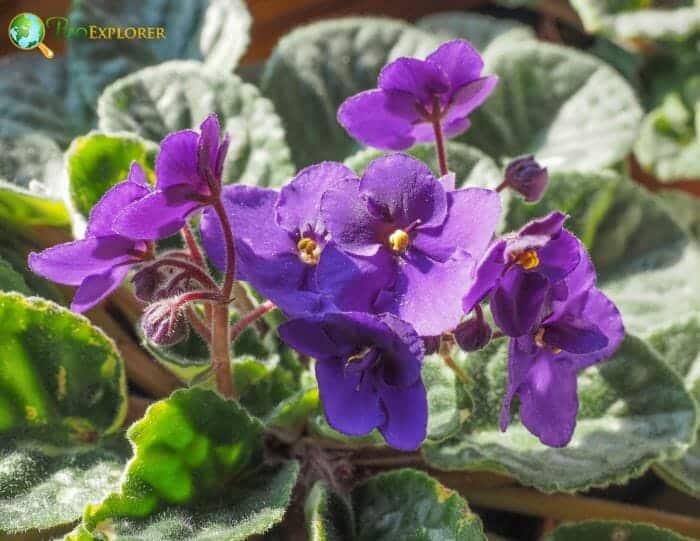
Lamiaceae
- The members of this family are usually herbs, sometimes shrubs, and rarely trees and lianas. The species characteristically bear essential oils.
- The leaves may be simple or compound, opposite or whorled, mostly herbaceous, leathery, or fleshy. These leaves can be flat, folded, rolled, or terete. They can be sessile or with petioles. The lamina is dissected or entire, and the lamina margins are entire, crenate, or serrate. Leaves lack stipules. A strong scent is produced by the leaves when crushed.
- Most plants are hermaphroditesWhat is hermaphrodites?Having both male and female reproductive organs., and the flowers are solitary or in inflorescences of verticils (usually), or heads, spikes, cymes, or panicles.
- Most species of the family have 5 sepals and 5 petals. The sepals and petals are both fused at the base. Commonly, the 2 lobes of the petals form the upper lip, and the 3 lobes form the flower’s lower lip.
- There are 2-4 stamens and 2 carpels.
- The ovary is superior, and the fruit is often a schizocarp.
- The seeds are endospermic to non-endospermic.
![]()
Acanthaceae
- Members of the Acanthaceae are shrubs, trees (including a few mangroves), or herbs.
- The leaves of the plants are simple, opposite, flat, and sessile (others are subsessile) or petiolate. The leaves are generally exstipulate.
- The flowers are bisexual and zygomorphic. The inflorescence of the flower is a cyme, raceme, or solitary.
- There are typically 5 calyx lobes; imbricate or valvate. The petals are als0 4-5; imbricate or convolute.
- The stamens of the flowers are usually 2 0r 4 (rarely 5). The syncarpousWhat is syncarpous?Flowering having united carpels; Contrast apocarpous. gynoeciumWhat is gynoecium?It is a collective term for all carpels (female parts) in a flower. Carpels can be either apocarpous (separate) or syncarpous (combined or united) has 2 carpels and 2 locules.
- The ovary is superior. The fruit is a dehiscent, loculicidal capsule.
- The seeds are non-endospermic with hook-like outgrowths (retinacula).
![]()
Gesneriaceae
- The plants of the Gesneriaceae are usually herbs. Other members are shrubs or lianas.
- Usually, the leaves are opposite and simple. The leaves are rarely alternate or whorled. The lamina is usually entire. The lamina margins are entire, serrate, or dentate. The leaves do not have a stipule.
- The flowers are bisexual and are solitary or aggregated in cymose (usually) or racemose.
- There are usually 5 valvate sepals. The petals are also 5; imbricate, and usually bilabiate.
- The stamens are 2-5, adnate to the corolla tube. The carpels are 2.
- The ovary of the flower is inferior. The fruit is usually a capsule and rarely a berry.
- The seeds are endospermic (oily if endosperm is present) or non-endospermic.
![]()
Orobanchaceae
- The plants of the Orobanchaceae are achlorophyllous or chlorophyllous herbs (parasitic or hemiparasitic). A few plants are shrubs or lianas.
- Orobanchaceae plants have simple, opposite or spiral, and exstipulate leaves. The achlorophyllous taxa have scale-like leaves.
- The flowers are bisexual. They are usually in spikes and rarely in racemes.
- The sepals are usually 4-5 and valvate. The petals in the corolla are typically 5; bilabiate and imbricate.
- The androecium has 4 0r 5 stamens. They are epipetalous and 1 whorl. The gynoecium usually has 2 carpels. Other species have 3 carpels.
- The ovary is superior. The fruit is a capsule.
- The seeds are minute and endospermic or exalbuminous. The endosperm is oily.
![]()
Plantaginaceae
- The plants under the Plantaginaceae family are terrestrial or aquatic herbs or shrubs.
- The plants often have simple, spiral, opposite, or whorled leaves. Most leaves are exstipulate.
- The flowers of the Plantaginaceae are bisexual. These flowers are solitary or a head, a raceme, or a spike.
- There are 3-5 imbricate lobes in the synsepalous calyx. The corolla also consists of 3-5 imbricate lobes.
- There are 1-8 alternipetalous and epipetalous stamens, and the carpels are 1-2.
- The flowers have a superior or an inferior ovary. The fruit is a capsule, achene, berry, or a schizocarp of nutlets.
- The seeds are minute endospermic. The endosperm is oily.
![]()
Scrophulariaceae
- Members of the family Scrophulariaceae are mostly shrubs and herbs. Other plant types are trees or lianas.
- Plants have alternate, opposite, or whorled leaves. The leaves are spiral or four-ranked when alternate. Leaves are usually simple. Others, however, have simple to compound leaves. The lamina is dissected or entire, and the lamina margins are entire, crenate, serrate, or dentate. Leaves lack stipules (exstipulate).
- The flowers are bisexual. These flowers are solitary or in cymes, racemes, spikes, heads, or panicles.
- The flowers have 4, 5 or 2 sepals in 1 whorl. These calyx lobes are persistent and imbricate or valvate. The petals are 4, 5, or 3 in a 1-whorled corolla. They are imbricate or valvate; more or less bilabiate.
- The stamens are 2-5; usually markedly unequal and are adnate to the corolla. The carpels are 2-3.
- The ovary is superior. The fruit of the Scrophulariaceae flowers is a mericarp when schizocarpic. When non-schizocarpic, the fruit is a capsule (usually) or a berry.
- The seeds are minute to small and endospermic. The endosperm is oily.
![]()
Verbenaceae
- The plants of Verbenaceae are lianas, trees, shrubs, and herbs.
- The leaves of the plants are usually opposite, simple or compound, and sessile or petiolate. Some are aromatic, while others have no marked odor. The leaves are exstipulate.
- The plants are usually hermaphroditeWhat is hermaphrodite?An organism or structure possessing both male and femal reproductive organs; a flower with both stamens and pistils. Other synonyms: bisexual or monoclinous., and the flowers are in cymes, racemes, spikes, heads, or verticils.
- The sepals are often 5; entire, lobulate, blunt-lobed, or toothed. The petals are also commonly 5; imbricate, and usually tubular.
- The stamens are 2-5. These stamens are adnate to the corolla tube, free of one another, and 1 whorled. The carpels are commonly 2. Other gynoecia are 4 or 5-carpelled.
- The ovary of the Verbenaceae is superior. Therefore, the fruit is a mericarp when schizocarpic. When non-schizocarpic, the fruit is a drupe (usually) or a capsule.
- Most seeds are non-endospermic.
![]()
Lamiales Example species
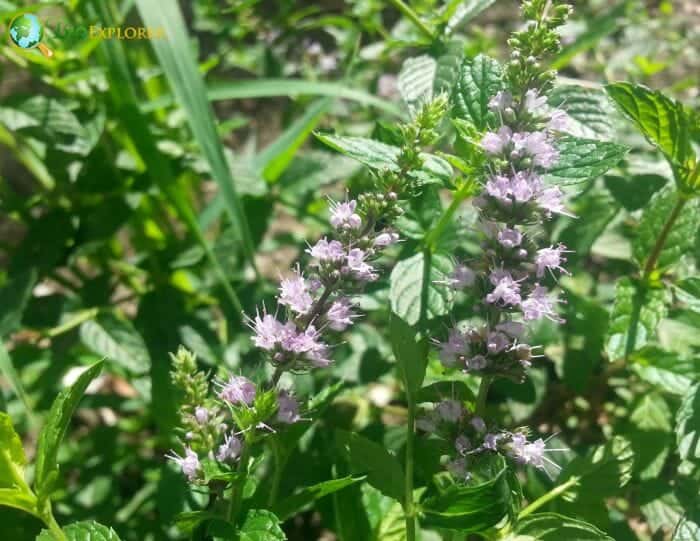
Many plants of the Lamiales order are medicinal. Some are economically important. Below are the plants that belong to order Lamiales.
- Mountain thistle – The Mountain thistle is traditional medicine in Africa and Nigeria.
- Crossvine – The crossvine plant is used as an ornamental. Also, it is used as a remedy for several ailments (diphtheria, edema, headaches, and rheumatism).
- Large caltrops – The leaves of the plant are edible. It is cooked as a vegetable. The large caltrops are also consumed as traditional medicine.
- African violet – The African violet is used as a houseplant.
- Wild mint – The wild mint is used as an herb and spice. The leaves are edible and can also be used to make tea. The plant also produces oil used to flavor desserts. The leaves of the wild mint are used in traditional medicine by the American Indians. Additionally, the fragrance from the plant is used as insect and rodent repellant.
- Lopseed – The Lopseed plant is used in traditional medicine. It has antimicrobial compounds.
- Common figwort – The common figwort is an indigenous medicinal plant.[5].
- Common vervain[6] – The common vervain is used as a garden plant. This plant has sociocultural value and is also used for rituals. Furthermore, the common vervain is used as a medicinal plant.
- Olive – The olive fruit is edible and is also the source of olive oil. The plant is also used in traditional medicine to treat several diseases. The olive tree is also planted as an ornamental.
- Swamp mazus – The swamp mazus is used as an ornamental plant (usually as a groundcover).
![]()











